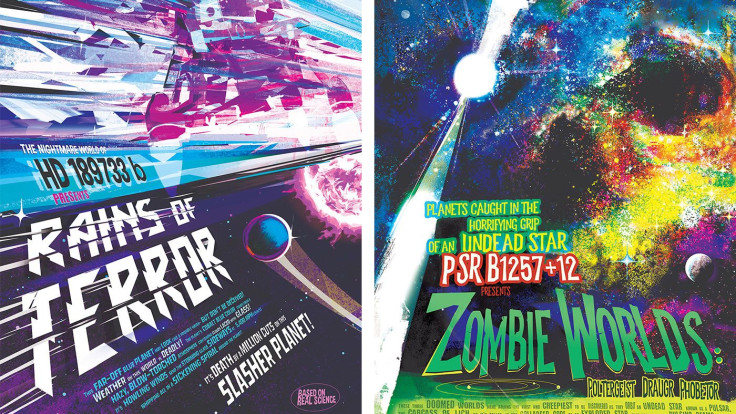NASA Uses Vintage Horror Posters And Videos To Discuss Terrifying Exoplanets [WATCH]

In celebration of Halloween, NASA released new posters and a video that pay tribute to vintage horror films. The new images were made by the agency to discuss just how terrifying some of the uninhabitable exoplanets really are.
The posters, images and video were made by NASA as part of a new informative series dubbed as Galaxy of Horror. In this series, the agency talks about some of the most uninhabitable exoplanets ever discovered.
In line with the series’ theme and Halloween season, NASA patterned its latest images after the cult classic B-movie horror films from the 1950s. The posters the agency designed can be downloaded for free through the Galaxy of Horrors page.
Aside from the design of the posters, NASA’s video for Galaxy of Horrors was also patterned after classic horror movies. Even the voice of the narrator used in the video is very reminiscent of the work of Rod Serling of the “Twilight Zone” and renowned horror actor Vincent Price.
According to Thalia Rivera, who headed the development of the series’ various images, Galaxy of Horrors was conceptualized to provide valuable information on planets that can only be described as anti-Earths.
"People are often most interested in finding exoplanets that could resemble Earth or potentially support life as we know it," she said in a statement. "But there are so many other amazing, mystifying planets out there that are completely unlike Earth and that show us the huge variety of ways planets can form and evolve. My favorite thing about exoplanets is how extreme they can get!"
One of the planets discussed in the Galaxy of Horrors video is the Poltergeist Planet, which according to the agency is one of the zombie worlds that is located in the most uninhabitable part of the galaxy.
“One of three dead planets shambling through the twisted magnetic fields of their corpse star, Lich, which is itself the collapsed core of an exploded star,” the narrator stated. “But despite its demise, this undead star spins twin beams of radiation that could incinerate a spaceship foolish enough to venture too close.”
“Even if you could make it to the surface, your nightmares would continue as the radiation from the zombie star rains down on planet Poltergeist, as well as her neighboring dead worlds of Draugr and Phobetor,” the narrator continued.
© Copyright IBTimes 2025. All rights reserved.





















